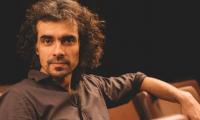KARACHI: The Usman Institute of Technology’s (UIT) aspiring electrical engineers have designed a project that can significantly help alleviate Karachi’s power woes by sharing the burden of K-Electric, the city’s sole power supplier.
Majoring in power, Saad Sarmad, 22, Zafeer Ahmed, 23, Abdullah Ali, 23, and Malik Muhammad, 23, have come up with a cost-effective, low-maintenance electricity generation and distribution equipment, named Burraq, for their final-year project.
Burraq can produce up to 1,000 watts from the water flow of the city’s different storm water drains. Their supervisor Prof Dr Abdul Qadir believes the project can generate far more energy with more robust equipment.
The quartet wanted to do something about power generation and distribution, so they looked for different resources, such as wind and sun, but decided to do something with water because it is seemingly available round the clock.
“We have designed a device for power generation that is portable and very effective for domestic use,” said Sarmad in an interview with The News. “The equipment is for run of the river,” explained Prof Qadir.
It is only used in Canada for power production. “But they have different technologies and they constructed it in 12 years, while we did it in four months at a cost of Rs150,000,” said Ahmed.
The project was funded by the Ignite National Technology Fund. Since the project has moved beyond its design and testing phases, Prof Qadir pointed out, its construction cost would now reduce to roughly Rs50,000.
The four young men ran from pillar to post to give their design a physical shape. From Ranchore Line to Lalu Khet and Sher Shah, said Muhammad, they went to every nook and cranny of the city to get the best rates from welders. “They only did the welding, while the design and moulding dimensions were done by us.”
Burraq has small turbine blades made of aluminium. It has a motor in the centre, which is its power-generation equipment. At the bottom they have attached a stand. “Its unique selling point is its light weight and portability,” said Sarmad.
According to Prof Qadir, the project was initially designed for Nehr-e-Khayyam in the city’s Boat Basin area. Shahid Abdullah, leading architect of the People and Nature Initiative who was heading the storm water drain’s restoration, was also on board for the project.
“If only the equipment designed by these students is installed in Nehr-e-Khayyam, it could generate power for two to three restaurants at Boat Basin,” said the supervisor, adding that it could end up saving KE’s power with “very nominal expenditure”.
Hub Canal test
The students have successfully tested Burraq in the Hub Canal, where the water flow was 1.6 cubic metre per second, which is roughly 45 cusecs.
DEO briefed the participants on the ongoing drive for the enrollment of children
Air ambulance would be deployed for emergency transfer of patient: says Sarfraz Bugti
Senator Palwasha Khan criticized the behavior of the SIC during the president’s address to the Parliament asserting...
Chief Justice Aamer Farooq heard the petition filed by the former president IHC Bar Council Nayab Gardezi through his...







